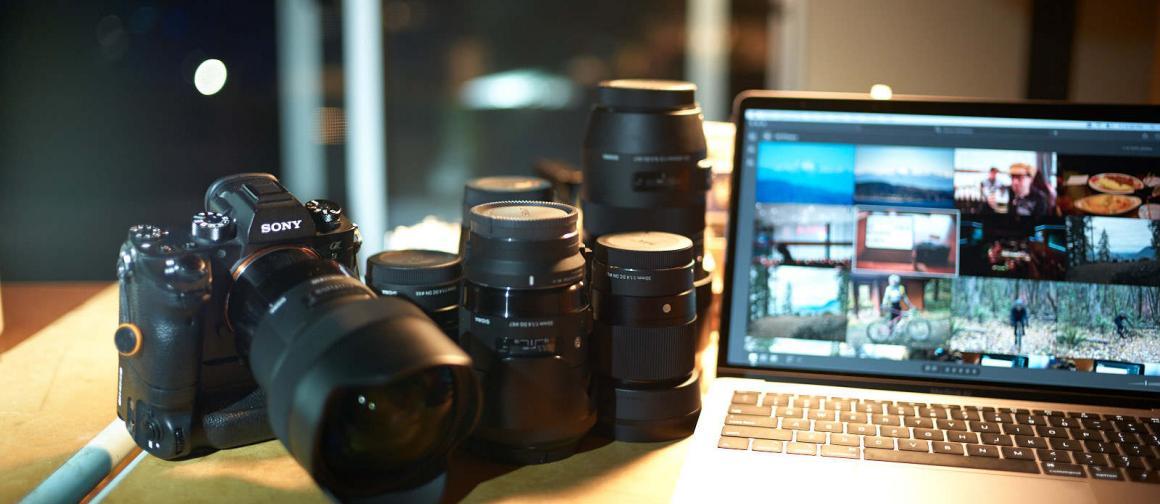
Four days into a huge Seattle snowstorm, I was getting a bit stir crazy. I’ve been confined to the studio and daydreaming about the time I spent in Maui a few months back with an a9 and three Sigma wide angle lenses.
Like the 3 primes I wrote about earlier, having a trio of wide primes in your camera bag allows for new, creative expression. While there, I took my first attempt at astrophotography and I was incredibly rewarded by the effort.
In Maui, every morning for ten days while the family slept, I woke before dawn leaving the vacation condo quietly to take long exposures from the beach looking out towards the wind farm on the West Maui mountains and behind at Haleakala.
Star and Light Trails
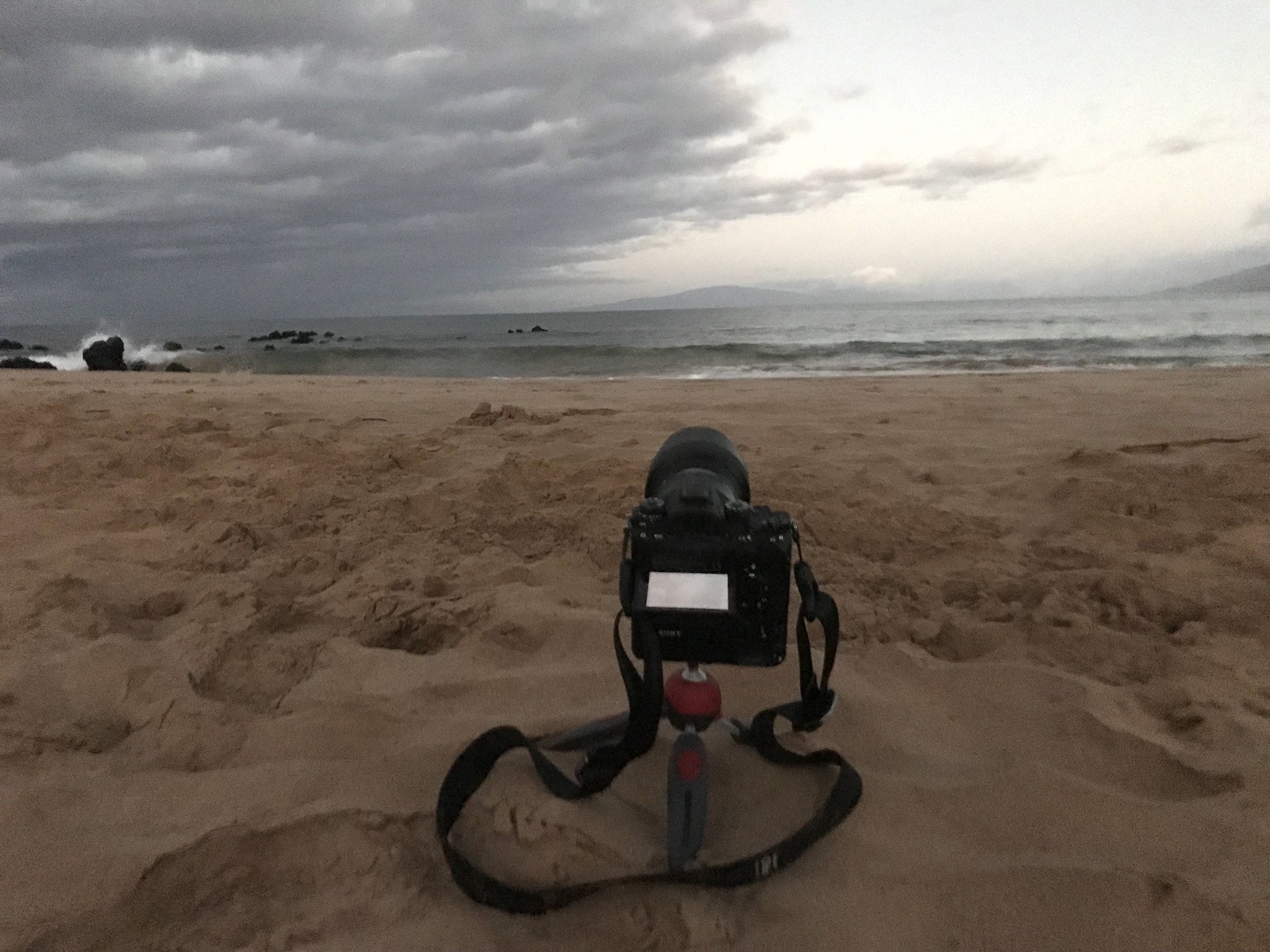
For the first seven attempts it was overcast. I decided if the clouds weren’t going to cooperate with my star and light trails assignment, then I’d shoot them instead. What I learned was that darkness isn’t the absence of light, far from it. During the long exposure, the light was changing by the second as the clouds passed by me. This photo looks more dramatic than it was. The cloudfront was moving slowly with the breeze. The moon was full and bright as a storm rolled in covering it before sunrise. In the distance, are the West Maui mountains with beacons atop each windmill of the wind farm.
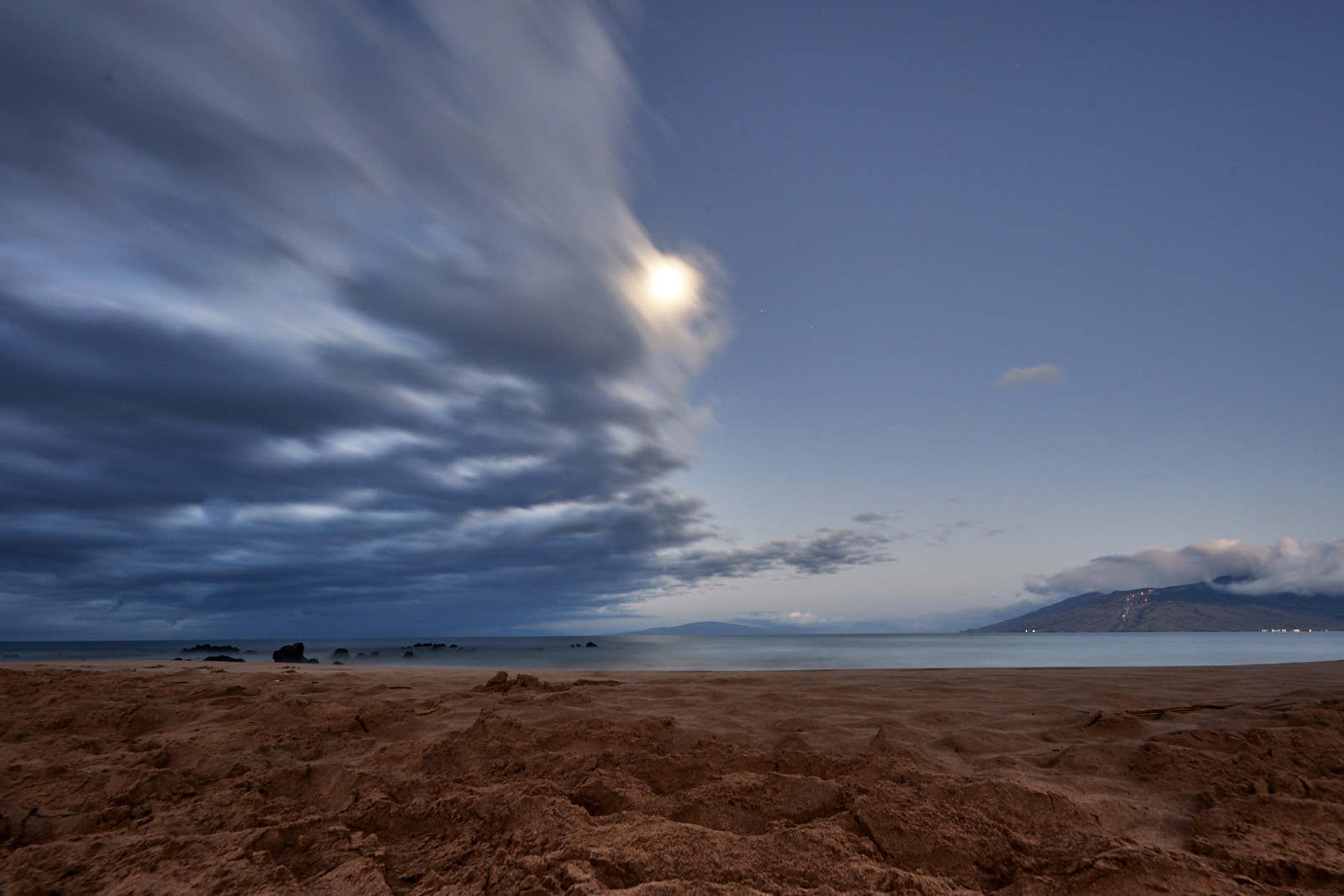
With a 14mm f/1.8 attached to the a9, I shot at ISO 125, a 30 second exposure, and f14. The images were amazing and it fueled my enthusiasm to change venues; taking astro shots from the top of Haleakala. That was quickly dampened by the government shutdown that limited access to the Haleakala National Park, so I stuck to the open state beaches. Here’s another photo taken with the 14mm of an overcast setting. The brightness on the right is Kihei.
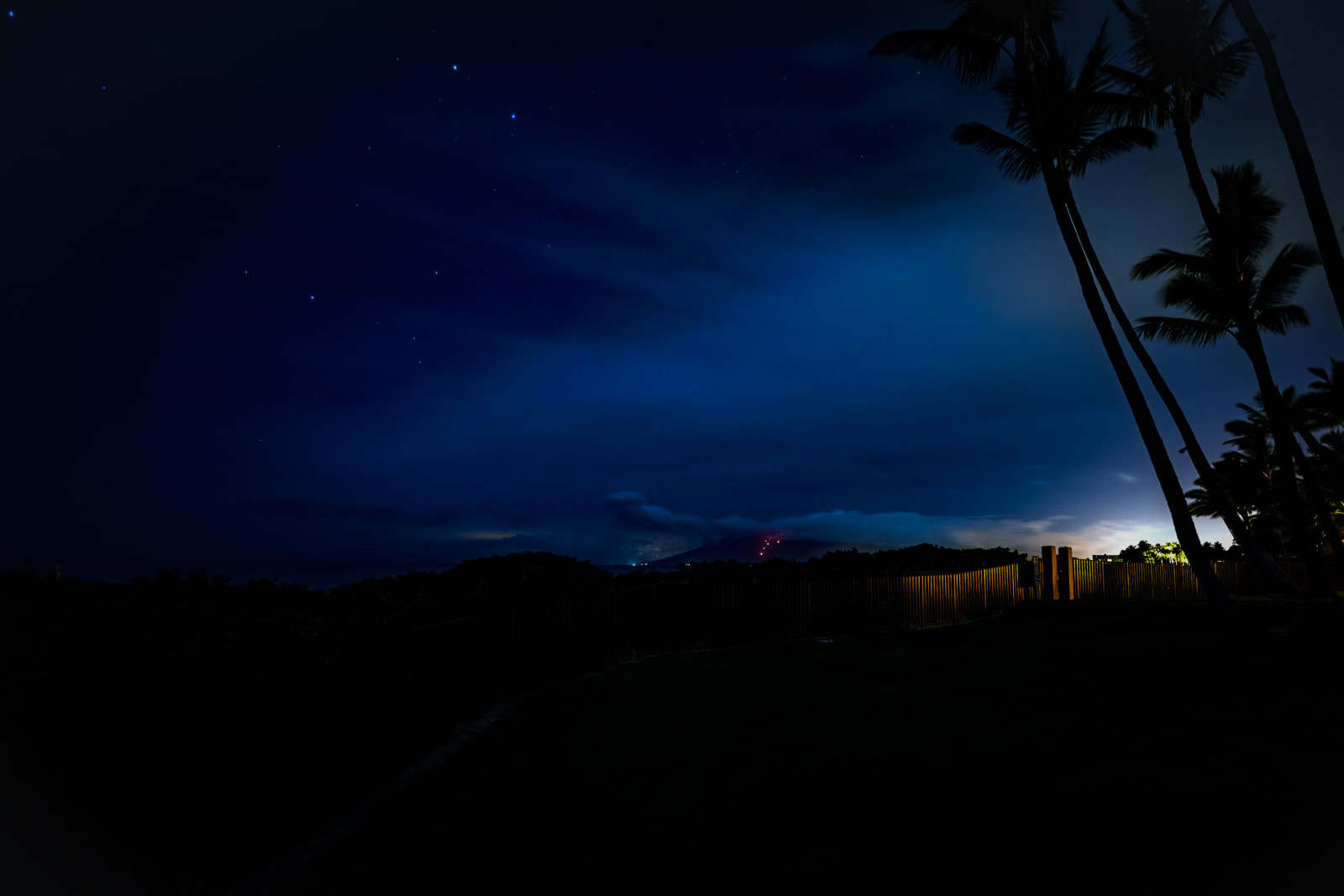
For this frame, I pointed the camera at Haleakala and captured this predawn light. Center right is, ironically, a spotlight from the observatory within the Haleakala National Park.
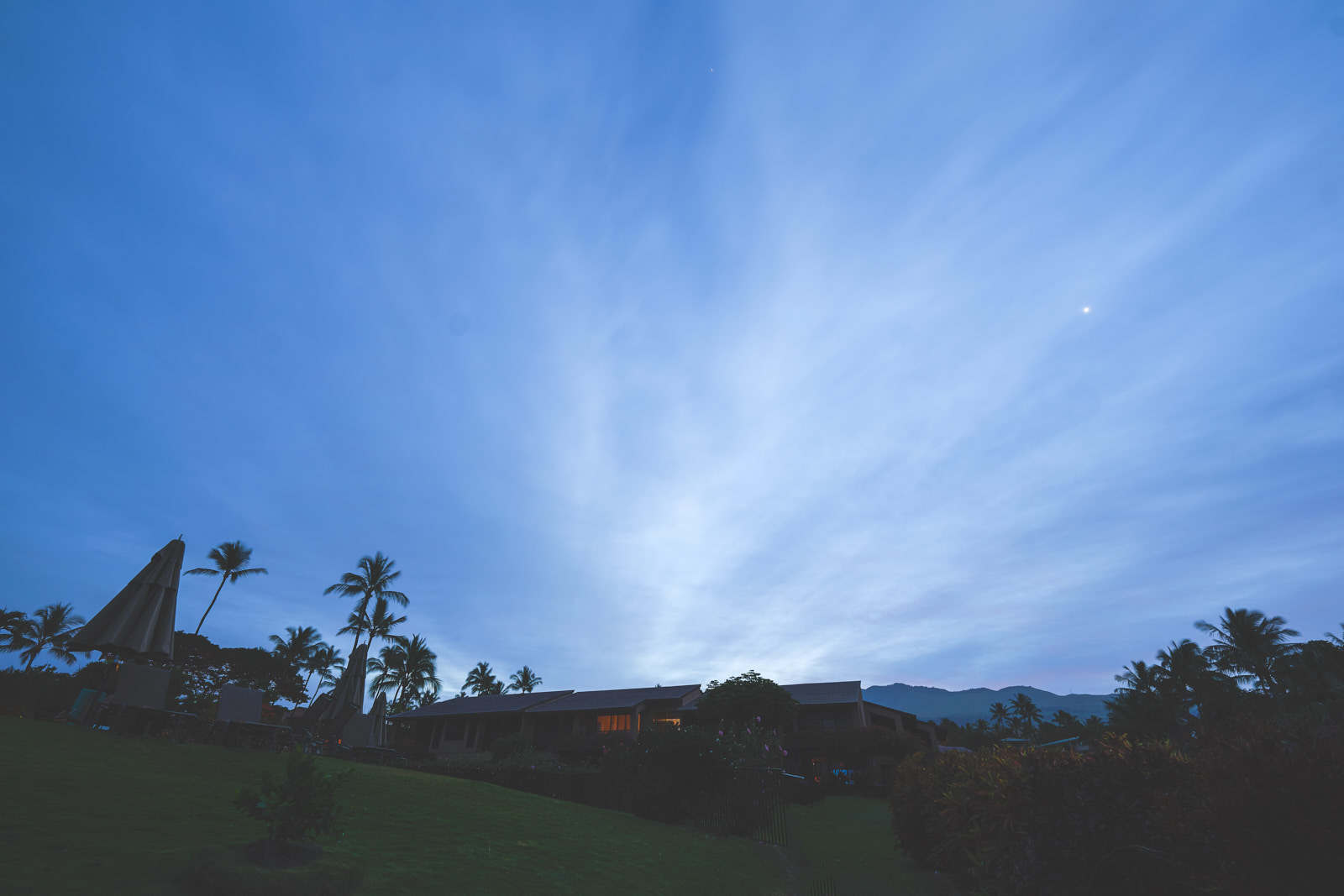
Sigma Art Wide Primes and Astro
On the 8th day, the sky was clear and I brought the 14mm with me to the beach again. A basic guideline for astrophotography is to shoot around 15-20 seconds at around ISO 800-1600. Be prepared for a lot of trial and error with this set up. On vacation, I had plenty of time for that.
To capture the star trails, I set the camera for a long exposure with noise reduction. I pointed the camera at the mountains and connected to the PlayMemories remote app. With the camera set at 64 and ISO 100 and the camera in bulb mode, I slid the shutter release on the iPhone app to the left to lock it in. I then locked the phone, put it down and set a timer for 40 minutes. When 40 minutes was up, I unlocked the phone, slid off of bulb and then waited for the camera, which took another 40 minutes to process the image.
When you try this technique, be ready for the shot to be overexposed when you look at it in Capture One. You’ll likely need to bring the whitepoint down a bit. Here’s how that morning turned out. For the next few days, I repeated the process and varied the time, but this was still the best photo and my favorite shot of the series.

Image Quality
I don’t have experience shooting long exposures or star trails, so I checked in with my colleague and famous Instagrammer Dan Rubin. Dan wanted to see the RAW files. Here’s what he had to say after reviewing them (and I totally agree, especially considering the price is $1599). Dan texted me this:
Not a ton of distortion in this lens. Nonetheless if the Sony is doing some correction in-camera before writing the RAW. Can’t even see any CA in this image.
The 14mm is impressive and Sony isn’t correcting anything except the noise in the long exposure.
The 20mm is also impressive. Knowing Lanai is sparsely populated and never having been before, I took it with me for a day trip and got this photo of Sweetheart Rock (Puu Pehe), an iconic Lanai landmark between Manele and Hulopoe Bay.
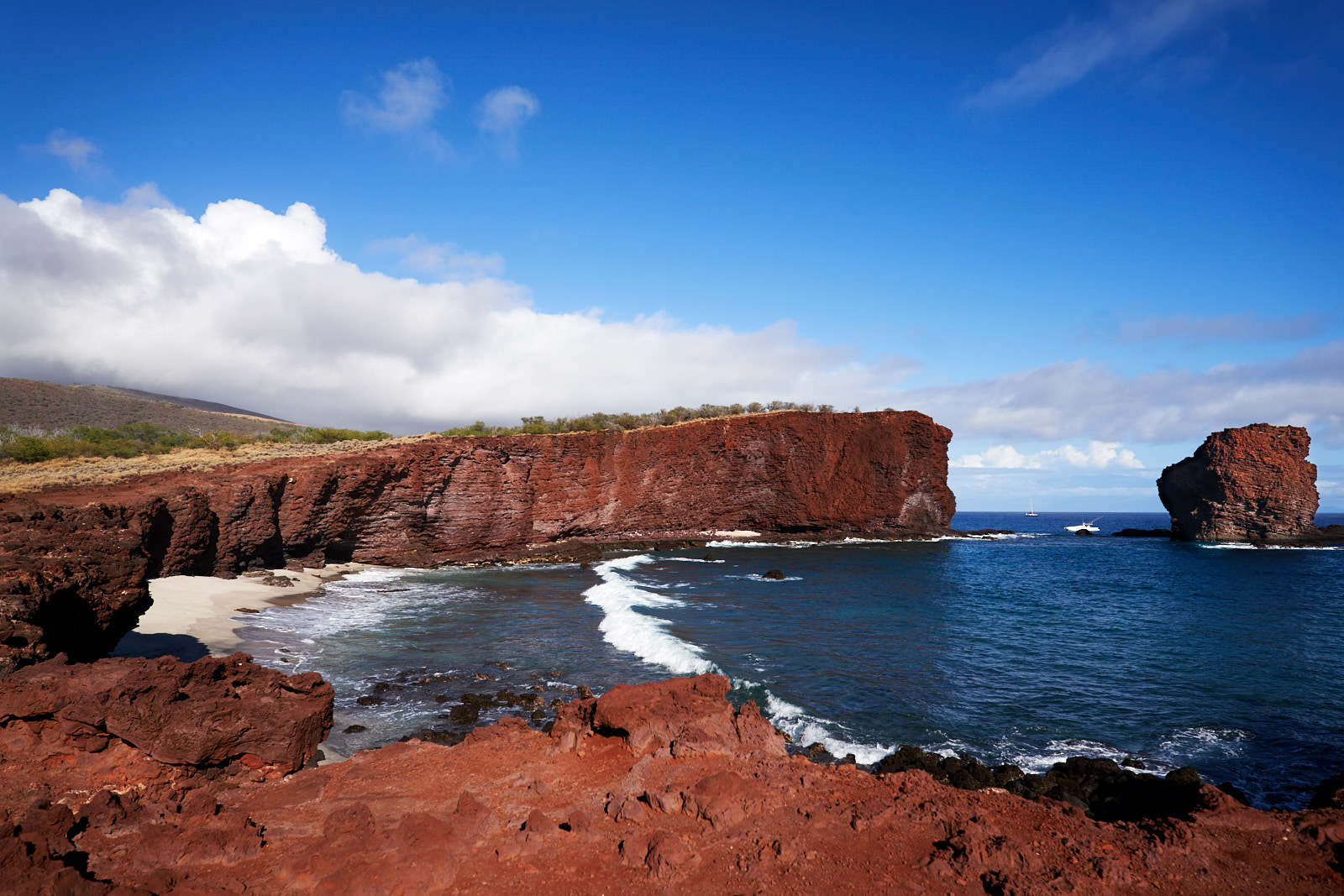
The wide angle captured the essence of the island and I could easily imagine the folklore behind Sweetheart Rock.
Capturing Fast Clouds
Back on Maui, no trip to is complete, for me at least, without a trip to the lava fields. That’s where I set the 24mm on a rock and triggered it with the remote app for this photo of upcountry, the foothills of Haleakala.
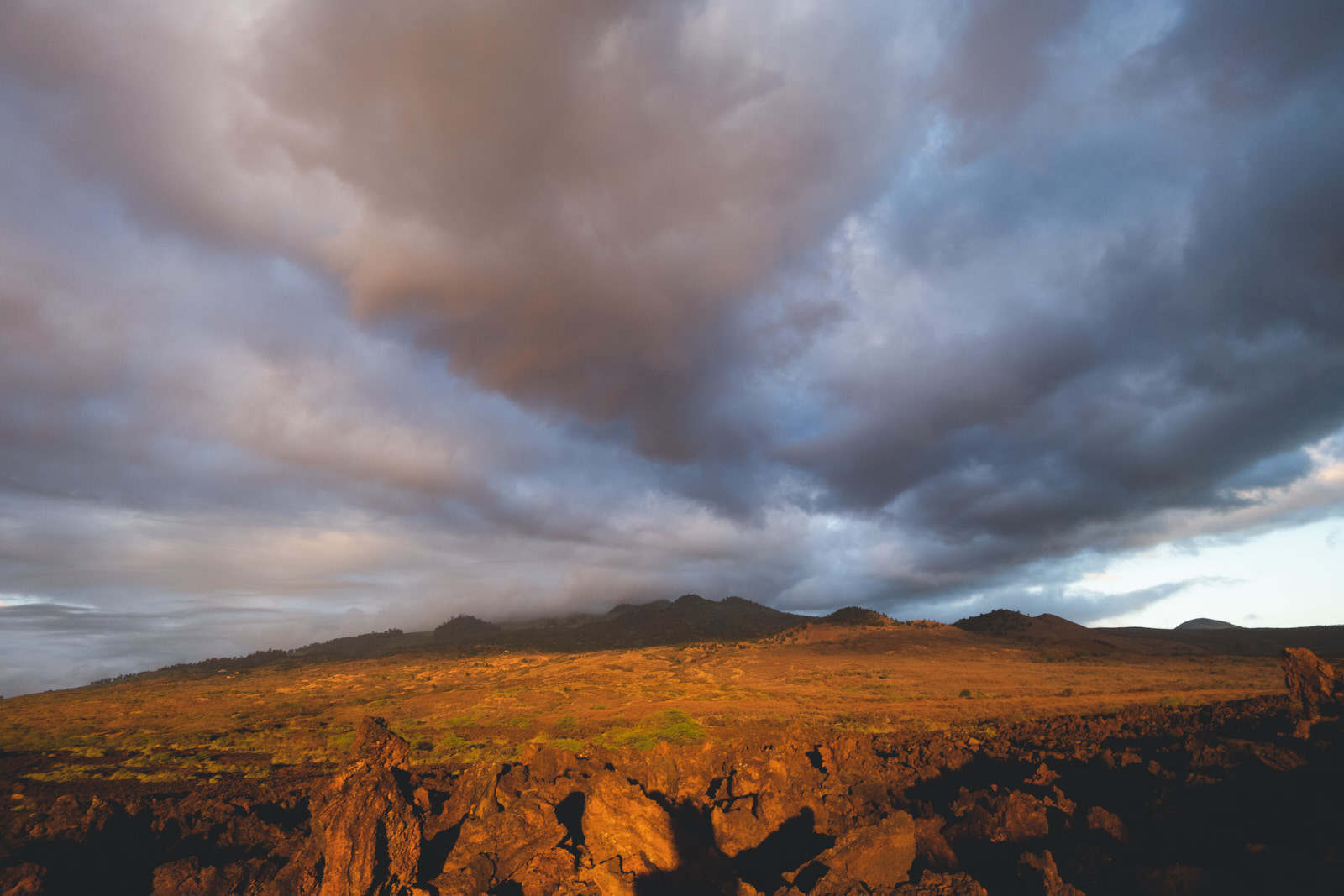
The clouds were rolling in fast. It was late in the day and I need to get back before the sun went down. After a dozen or so frames, this one popped, reinforcing why trying new photographic genres, primes, and wide angles is good for your creativity; you simply capture more of the world around you. For me, that was Maui. I’m sure these wides will create fantastic photos of the snow in Seattle, too.
If you’re interested in the rest of the gear I had in Maui, check out this story in Digital Photo Pro about the [amazon_textlink asin=’B08N5LNQCX’ text=’MacBook Air’ template=’ProductLink’ store=’texturadesign-20′ marketplace=’US’ link_id=’bae0e319-6770-48e9-b162-80d009962fba’]. The Sigma lenses are described below.
14mm F1.8 DG HSM Art
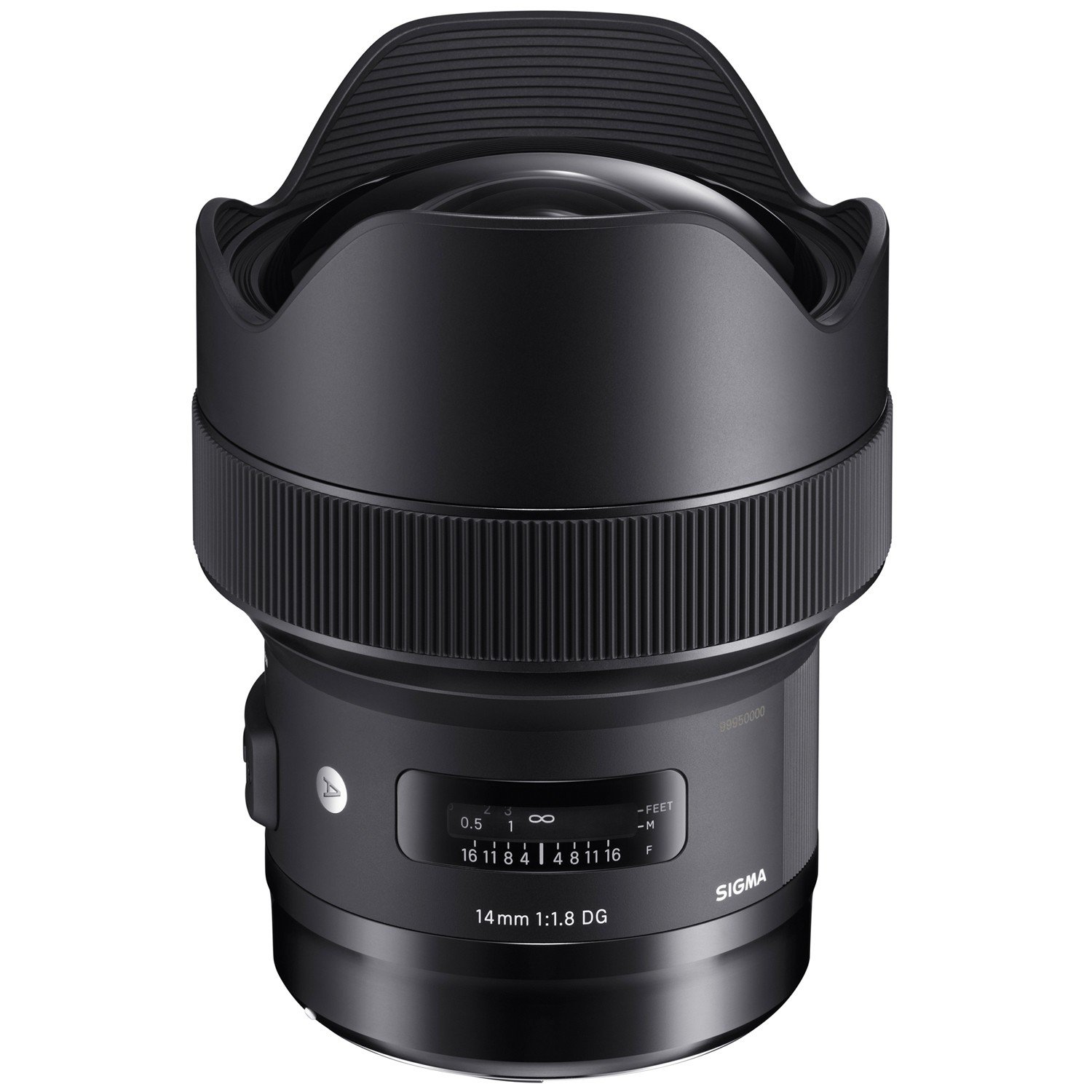
The Sigma 14mm 1.8 DG HSM Art is the world’s first 1.8 prime lens at 14mm focal length. It features the same large aspherical element touted in the Sigma 12-24mm F4 Art to control distortion and create stunning imagery, as Dan Rubin noted to me. An updated Hyper Sonic Motor (HSM) provides fast and accurate autofocus while 3 Premium FLD and 4 SLD glass elements control chromatic aberration and sagittal coma flare. The Sigma 14mm 1.8 DG HSM Art is designed to resolve to latest high megapixel Sony sensors. And, like every Global Vision Lens, the Sigma 14mm 1.8 DG HSM Art is handcrafted at their factory in Aizu, Japan. The 14mm 1.8 Art retails for $1599 from retailers like B&H or Adorama.
20mm 1.4 DG HSM Art
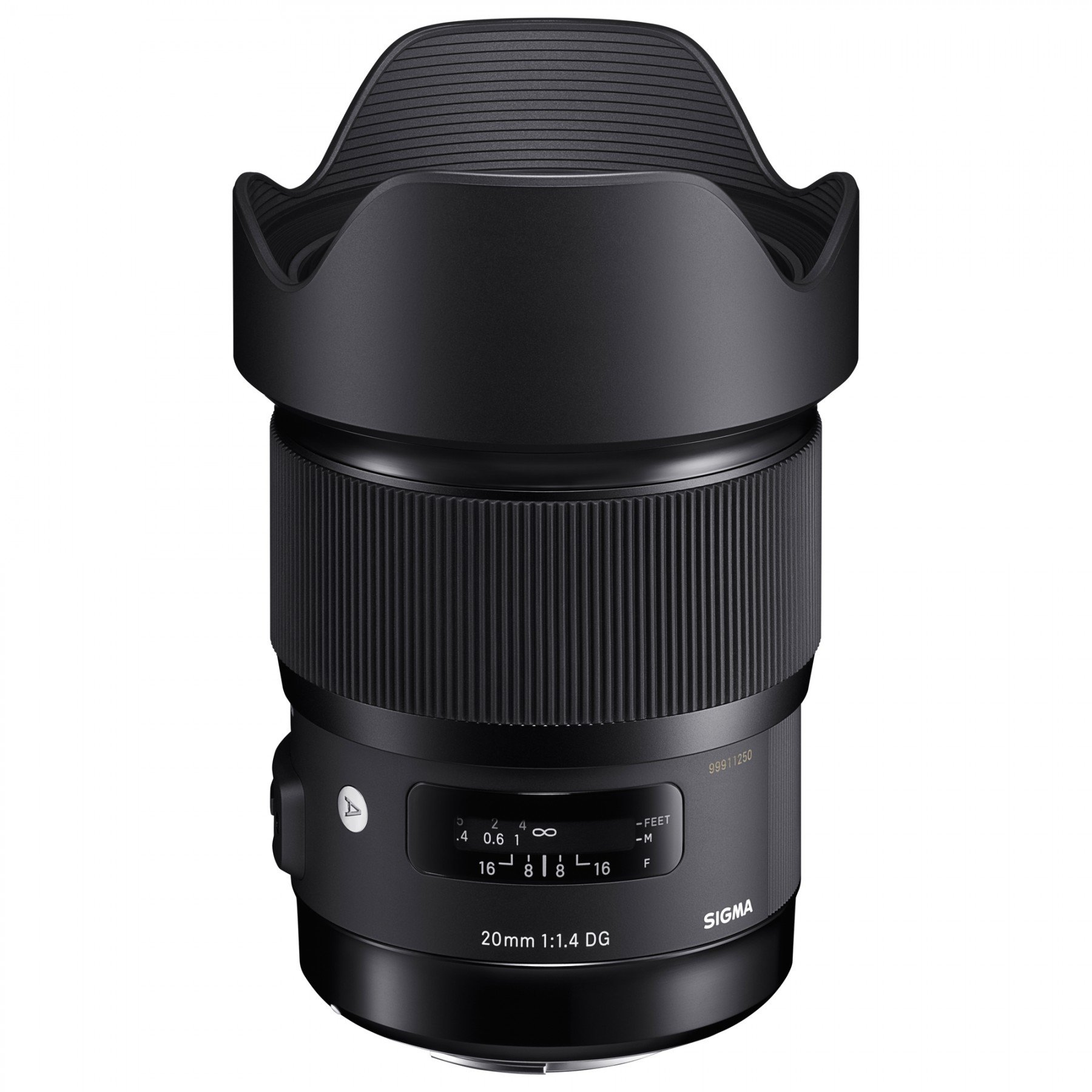
The Sigma 20mm 1.4 DG HSM Art is a wide-angle prime lens designed for Full Frame cameras like the a9. It benefits from Sigma’s 50 years of lens making experience, the 20mm 1.4 Art is the widest large aperture Art lens Sigma has made. Sigma’s optical design allows for the utmost in image quality with careful attention paid to edge to edge performance. There are many technical reasons for why Sigma’s glass performs so well, but what you need to know is I spent little time with the Lanai photo in post.
There was a bit of a crop and a dynamic range change to bring out the clouds. It’s Sigma’s decades of experience in lens design that results in a a 20mm that incorporates both “F” Low Dispersion (FLD) glass, and five Special Low Dispersion (SLD) glass in a design of 15 elements in 11 groups. The advanced optics and optimized lens power distribution minimizes spherical aberration, axial chromatic aberration and field curvature, produced outstanding image quality, as you can see above.
The 20mmm 1.4 Art is ideal for landscape photography. What I’d like to do with it as well is videography. The 20mmm 1.4 Art retails for $899.
24mm F1.4 DG HSM Art
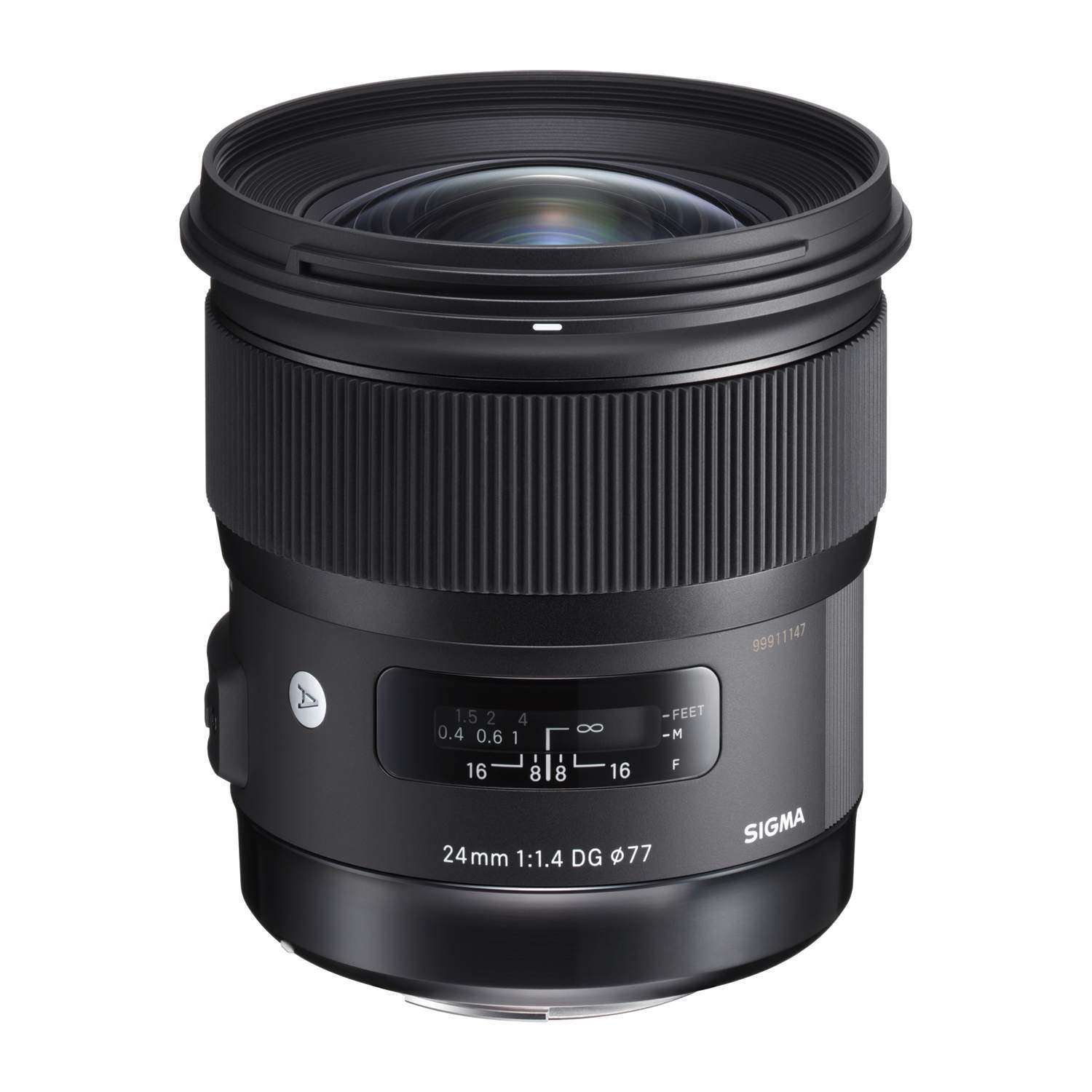
The Sigma 24mm 1.4 DG HSM Art sets a new standard for fast aperture wide angle prime lenses. Sigma’s latest optical design allows delivers image quality and sharpness that I spend little time working on in post. This lens is manufactured with aspherical elements in the rear for great performance when shooting wide wide open. Like its 2 siblings in the line, the lens uses premium FLD & SLD glass elements, which keeps aberrations and distortion to a minimum. The 24mm retails for $849.
Find Sigma’s fast primes at a dealer near you and online from retailers like B&H or Adorama. Of the 3 primes, I enjoyed shooting with the 14mm the most. I’d suggest you mix and match the wides with the 1.4 primes and go get creative with your photography.
…My daily shooter is Sony A1 with a vertical grip and various Sony lenses attached like the FE 20mm F1.8. Find more gear recommendations in our shop. As an Amazon Associate I earn from qualifying purchases.
